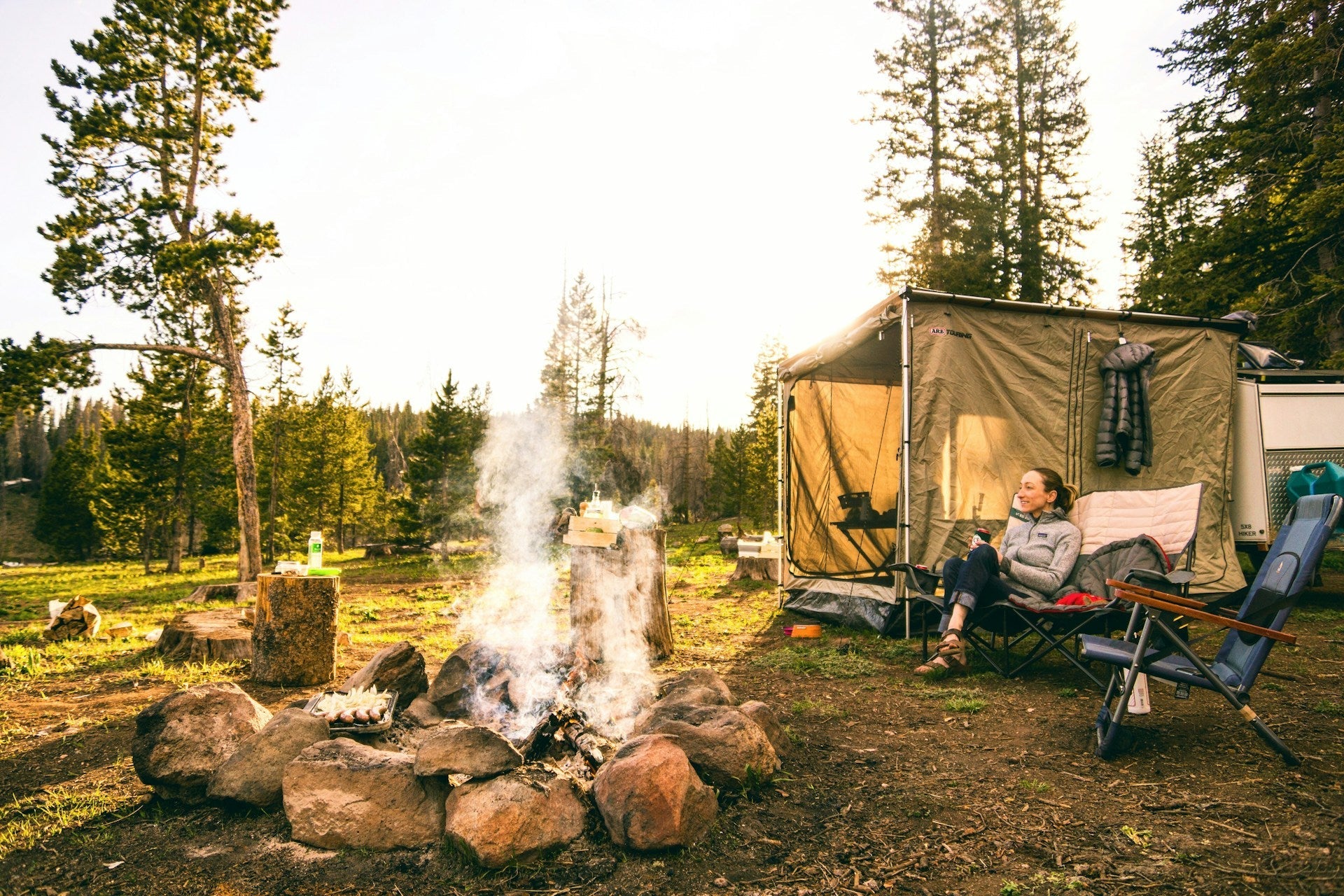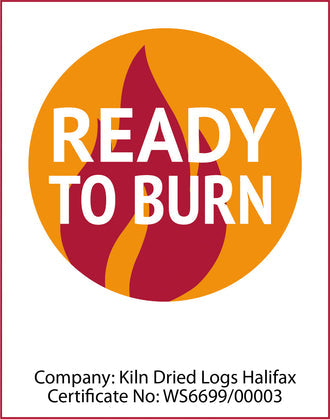
Best Wood for Camping Fires: Long-Lasting and Easy to Burn
Why Choosing the Right Wood for Camping Makes All the Difference
The crackling sound of a well-built campfire is one of the most satisfying aspects of outdoor adventures, but not all fires are created equal. The type of wood you choose for your camping trip directly impacts how well you'll cook your meals, how warm you'll stay through chilly nights, and how long your fire will burn without constant attention.
Many campers make the mistake of grabbing any available wood without considering its burning characteristics or moisture content. This approach often results in smoky fires that won't stay lit, uneven cooking temperatures, and constant fire maintenance. The right wood for camping burns cleaner, hotter, and longer, providing consistent heat while producing minimal smoke.
Professional outdoor guides consistently emphasize that good firewood is the foundation of successful outdoor cooking and comfortable evenings around the fire. The difference between properly seasoned hardwood versus wet or inappropriate wood can transform your camping experience.

Understanding Firewood: The Science Behind Hardwood vs Softwood
To select the best wood for camping, you need to understand the fundamental differences between hardwood and softwood, as these characteristics determine burning behavior and heat output.
Hardwood Characteristics:
-
Dense structure with more lignin and cellulose per cubic inch
-
Burns at 800-1000°F with longer burn times
-
Produces excellent coals for extended heat
-
Ideal for cooking applications requiring consistent heat
-
Examples: oak, maple, hickory, birch
Softwood Characteristics:
-
Ignites more easily but burns quickly
-
Contains volatile compounds and resins
-
Can create excessive smoke and sparks
-
Excellent for kindling and fire-starting
-
Examples: pine, fir, cedar, spruce
Moisture content significantly affects burning performance regardless of wood type. Properly seasoned wood should have moisture levels below 20%, while green wood can contain 30-50% moisture, leading to poor combustion and excessive smoke.
The Best Types of Wood for Camping: A Comprehensive Analysis
Oak: The Gold Standard
Oak represents the pinnacle of camping firewood due to its exceptional density and consistent burning characteristics. This hardwood burns slowly and evenly, producing minimal smoke and excellent coals that maintain heat for hours. Oak provides steady, controllable heat perfect for cooking applications, though it requires patience during ignition.
Hickory: Premium Heat and Flavor
Hickory burns extremely hot and long, making it one of the most efficient choices for wood for camping. This dense hardwood produces excellent coals with minimal smoke and imparts a distinctive smoky flavor to food. The main considerations include higher cost and intense heat that requires careful management.
Birch: Fast Ignition with Good Heat
Birch offers excellent balance between ignition ease and heat production. The bark contains natural oils that help ignite readily even in damp conditions, while the wood burns hot and clean. Paper birch bark serves as exceptional natural kindling, igniting even when wet.
Maple: Consistent and Reliable
Maple provides reliable, consistent burning characteristics suitable for all camping applications. This hardwood ignites more easily than oak while providing good heat output and reasonable burn duration with minimal smoke and pleasant aroma.
How to Identify and Prepare Quality Camping Wood
Signs of Properly Seasoned Wood:
-
Feels noticeably lighter than green wood
-
Shows cracks radiating from log ends
-
Produces sharp, clear sound when pieces are knocked together
-
Displays faded color compared to fresh-cut wood
-
Has loose or missing bark
Optimal Wood Sizing:
-
Kindling: pencil-thin to thumb-sized pieces
-
Medium fuel: wrist-thick transitional pieces
-
Primary logs: 4-6 inches in diameter
-
Split oversized pieces for better burning performance
Storage Best Practices:
-
Elevate wood off ground using tarps or platforms
-
Cover with waterproof material while allowing air circulation
-
Store kindling in completely waterproof containers
-
Keep staging areas near fire site for easy access
Step-by-Step Campfire Building Guide
Site Preparation
Clear a 10-foot diameter area around your fire location, removing all flammable materials. Use existing fire rings when available, or create proper containment using rocks in a 3-foot diameter circle.
The Three-Stage Building Method
Foundation Setup:
-
Arrange larger logs parallel with gaps for airflow
-
Create tinder nest of dry grass or birch bark in center
-
Keep water or dirt readily available for emergency suppression
Kindling Structure:
-
Build tepee structure around tinder nest
-
Start with smallest pieces, gradually adding larger kindling
-
Leave adequate gaps for air circulation
-
Ensure pieces are close enough for flame transfer
Fire Development:
-
Light tinder nest and allow flames to establish
-
Add progressively larger wood as fire grows
-
Allow flames to die to glowing coals for cooking
-
Maintain balance of fuel input and air circulation

Essential Tools: Wood Stove and Fire Starting Solutions
Wood Stove for Camping Benefits
A wood stove for camping offers significant advantages over traditional open fires, particularly in challenging weather conditions. These portable units concentrate heat output, reduce wood consumption, and provide better cooking control while minimizing environmental impact.
Key Features to Consider:
-
Adjustable air intakes for burn control
-
Removable ash pans for easy cleaning
-
Weight vs. durability trade-offs
-
Cooking capacity and fuel efficiency
Wooden Firelighter Applications
Wooden firelighter products and natural alternatives significantly improve fire starting success rates in challenging conditions. Commercial options typically consist of seasoned wood pieces infused with natural wax or oil compounds.
Natural Fire Starting Materials:
-
Fatwood (resin-rich pine wood)
-
Birch bark strips
-
Dry cedar shavings
-
Position at tinder nest base for sustained flame
Cost Considerations: Buying vs Collecting Wood
Commercial Firewood Value
Purchasing commercial wood for camping offers convenience and quality assurance. Kiln dried logs from reputable suppliers like those at Kiln Dried Logs provide guaranteed moisture content and consistent quality.
Economic Benefits of Premium Wood:
-
Superior burning efficiency reduces waste
-
More heat per log with less maintenance
-
Eliminates guesswork from firewood selection
-
Often proves economical despite higher initial cost
Legal and Ethical Collection
Collecting wood from natural sources requires understanding legal restrictions and environmental conservation principles. Many public lands prohibit wood collection to prevent ecosystem damage.
Collection Guidelines:
-
Verify regulations with appropriate authorities
-
Obtain explicit landowner permission for private land
-
Take only dead, fallen material
-
Leave standing dead trees for wildlife habitat
-
Practice Leave No Trace principles
Fire Safety and Environmental Responsibility
Essential Safety Protocols
Before Starting Fires:
-
Check local fire regulations and restrictions
-
Obtain required permits
-
Assess wind conditions and humidity levels
-
Ensure adequate water supplies nearby
During Fire Use:
-
Never leave fires unattended
-
Maintain constant supervision
-
Keep suppression tools immediately accessible
-
Monitor for wind changes or unexpected flare-ups
Complete Extinguishing Process:
-
Pour water over all coals and ashes
-
Stir mixture thoroughly
-
Pour additional water over entire fire area
-
Test with hand for remaining heat
Leave No Trace Fire Principles
Use established fire rings when available rather than creating new fire sites. Burn only natural wood materials and avoid manufactured items that create toxic emissions. Completely burn wood to ash and scatter cold ashes away from water sources.

Frequently Asked Questions
Which Wood Burns Longest?
Oak and hickory provide the longest burn times, with properly seasoned pieces maintaining heat output for 2-4 hours. Dense hardwoods create substantial coal beds that continue producing heat long after flames subside.
Can I Use Pine for Camping Fires?
Pine and softwoods work well for kindling and quick heat when dry and resin-free. Use them to establish fires quickly but rely on hardwoods for sustained cooking and warming applications.
How Much Wood for Weekend Camping?
Most weekend trips require 1-2 face cords of mixed firewood for moderate use. Plan approximately 20-30 pounds per day for basic cooking and evening warmth, adjusting upward for cold weather.
Testing Wood Moisture Content?
Professional moisture meters provide accurate readings (below 20% is ideal). Field tests include the knock test - dry wood produces sharp, clear sounds while wet wood creates dull thuds.
Store Wood to Keep Dry?
Elevate storage using pallets or tarps to prevent ground moisture. Cover with waterproof material allowing air circulation. Store kindling in completely waterproof containers.
Conclusion: Mastering Wood Selection for Memorable Camping
The difference between mediocre and exceptional camping experiences often comes down to mastering wood selection and fire management skills. Quality firewood provides the foundation for successful outdoor cooking, comfortable warmth, and memorable camping ambiance.
Understanding different wood characteristics, from oak's long-burning reliability to birch's quick-igniting convenience, enables informed decisions that match firewood selection to specific camping needs. Proper fire building techniques, safety protocols, and environmental responsibility ensure your fires enhance rather than compromise natural environments.
The investment in quality kiln dried logs and proper fire management tools pays dividends in reduced frustration, improved cooking results, and more enjoyable outdoor experiences. Whether car camping or backpacking, thoughtful wood selection will enhance every aspect of your outdoor adventures.
Take Your Camping Fire Skills to the Next Level
Ready to transform your camping experiences with superior firewood? Explore the premium selection of kiln dried logs for guaranteed quality and consistent performance on your next outdoor adventure.
Share
